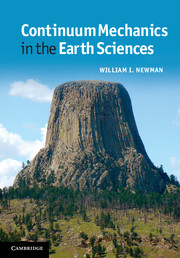Book contents
2 - Stress principles
Published online by Cambridge University Press: 05 June 2012
Summary
Body and surface forces
We begin by examining the nature of forces on continuous media. We will pursue this theme later by examining material response. This topic is a truly venerable one with significant references made by Newton (Chandrasekhar, 1995) and many others before and after. Early treatments of this topic employ modes of notation very similar to ours, but largely focus on two-dimensional problems since much of the algebra reduces to that associated with quadratic equations. We will show that in three dimensions, the algebraic problem corresponds to a cubic polynomial with real roots which can be easily determined by analytical means. A medium is homogeneous if its properties are the same everywhere.
Homogeneity, however, can be of two types: regular or random. A regular homogeneous medium has the same underlying character everywhere, e.g. a piece of metal whose atoms are organized in a lattice. A random homogeneous medium has the same underlying statistical distribution of properties, but may lack regularity. For example, a rock composed of many different grains cemented together can be said to be homogeneous if the statistical properties of the mix do not vary. A homogeneous material is also said to be isotropic, i.e. looks the same in all directions. The material looks the same because it is the same. However, an isotropic material is not necessarily homogeneous. For example, the Earth appears to be (crudely) isotropic as viewed from its center but the core, mantle, and lithosphere are very distinct from each other.
- Type
- Chapter
- Information
- Continuum Mechanics in the Earth Sciences , pp. 27 - 48Publisher: Cambridge University PressPrint publication year: 2012



